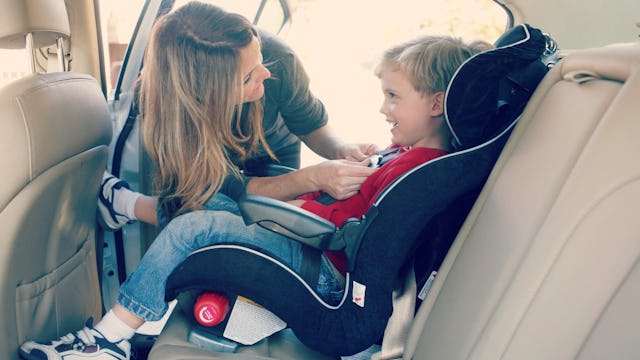This Is The Most Dangerous Thing Parents Do With Their Kids

For practically all parents, our children’s safety is our No. 1 concern. “Keep them alive” is our prime directive, quickly followed by “Keep them whole” and “Keep them well.” It’s part of the mama bear instinct.
And so we fret over all manner of choices that tap into that instinct. We heed warnings about lead paint and crib bumpers. We put locks on cabinets and gates on stairways when we have crawling babies. We make toddlers hold our hands to cross the street and trick them into eating as many vegetables as we can. We talk to older kids about stranger danger and teach what to do if they get lost in a public place. We worry about them when they’re out of our eyesight.
But the most dangerous thing parents do is something almost all of us have done almost daily since our kids were born. It’s something we take certain precautions with, but rarely think about otherwise.
We put our precious babies into our automobiles and drive them around.
For kids ages 0–19, the leading cause of death is car accidents where kids are passengers in a moving vehicle.
I currently live in Washington state, which has the highest seat belt compliance rate in the nation at almost 97%, but I’ve also lived in other states and traveled extensively around the country, and I can’t tell you how many times I’ve seen cars driving down the highway at 65 miles per hour with kids bouncing around in the back seat, clearly unbuckled. I’ve seen people holding babies or toddlers on their laps. I’ve seen four or five kids crammed into a three-seat back seat.
One study by the Centers for Disease Control and Prevention found that, in one year, more than 618,000 children under the age of 12 rode in cars without a safety seat, booster seat, or seat belt at least some of the time.
But the danger isn’t just in neglecting to use safety seats or seat belts. Many safety-conscious parents think they have their children safely buckled into the car when they don’t.
As a writer, I have to peruse stock photos all the time. It is shockingly difficult to find a stock photo of a kid in a car seat with the harness buckled and chest clip positioned properly. In fact, it’s become a running, not-so-funny joke among my writer friends.
However, that phenomenon simply reflects reality. In a study published in the Journal of Pediatrics, out of 300 parents who were surveyed and observed installing car seats and positioning infants in them, only 5% of them made no mistakes.
And we aren’t talking about tiny mistakes either: 77% of parents incorrectly installed the seat, 86% positioned the newborn incorrectly in the seat, 69% of babies had a loose harness, and more than one-third positioned the retainer clip too low.
And that’s just infant seats.
Part of the challenge is that all car seats are different and instructions can be confusing. Rules and guidelines are always changing for how long kids should stay in car seats and boosters, and it can be hard for parents to keep up. We have a tendency to think that the way we’ve always done something is just fine, especially when we haven’t had any negative experiences, so we don’t always adjust to new guidelines willingly.
But once again, statistically speaking, putting our kids in the car and driving them places is the riskiest thing parents do. Shouldn’t we do everything possible to lessen that risk, even if it involves constantly educating ourselves and making adjustments? When I was born, seat belts weren’t even standard in cars. When my kids were newborns, the rear-facing recommendation was only for a year. When we know better, we do better.
If you need help figuring out how to install a car seat properly or how to position the straps and buckle them correctly, visit the National Highway Traffic Safety Administration website to find a child safety seat inspection station near you. They will check your seat installation and positioning at no cost.
That one check may mean the difference between life or death in a car accident with your child. Totally worth it, don’t you think?